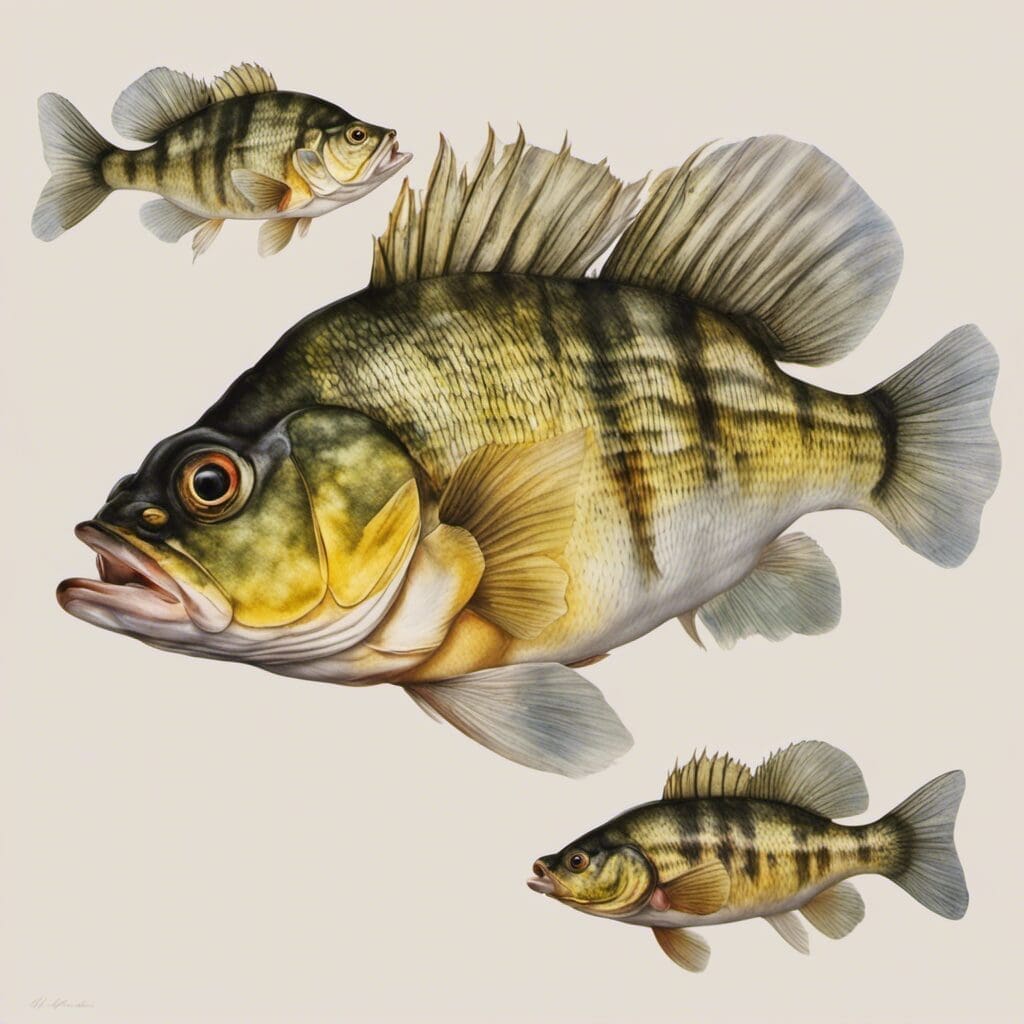Introduction
The American Yellow Perch, scientifically known as Perca flavescens, is a member of the Percidae family. This freshwater fish is native to North America and is commonly found in the Great Lakes region.
Conservation Status
Current Status: The American Yellow Perch is categorised as a species of ‘Least Concern’ according to the International Union for Conservation of Nature (IUCN) Red List.
Conservation Efforts: Various regulations are in place to manage and conserve populations, including bag and size limits along with specific fishing seasons.
Statistics
| Stat | Average | Range |
|---|---|---|
| Length | 6-10 inches | 4-15 inches |
| Weight | 0.5-1.0 lbs | 0.3-2.3 lbs |
| Lifespan | 9-10 years | |
Other Stats: Yellow Perch are known to spawn in the spring, reaching sexual maturity at two years old.
Distribution
Regions/Countries: The American Yellow Perch can be found throughout North America, particularly in the Great Lakes region, and from North Carolina to Maine in the United States.
Migration Patterns: This species is relatively sedentary with limited migration, generally moving to deeper waters as the seasons change.
Habitats
Water Type: Freshwater
Depth range: Shallow, 5-30 feet
Temperature range: Prefers 21-24°C
When and Where to See
Seasonal Patterns: Spring is an optimal time to observe as they move to shallow waters for spawning.
Time of day: They are particularly active at dawn and dusk.
Best Fishing Locations
American Yellow Perch can be found in numerous locations, with particular hotspots listed below:
- Lake Erie, Ohio
- Finger Lakes, New York
- Cascade Lake, Idaho
- Lake Michigan
- Lake Winnebago, Wisconsin
General Tips:These fish can be found in most freshwater systems, so look in areas with aquatic vegetation and near structures such as rocks or wood.
How to Catch
Preferred bait or lures: Minnows, nightcrawlers, and small spinners and jigs are effective.
Fishing Techniques: Bottom fishing and jigging.
Best time of day or season for fishing: Spring, during their spawning season.
Identification Guide
Physical characteristics: Yellow Perch display lateral lines with dark vertical bands on a yellow-green body. Their dorsal fin is spiky, and they have red or orange lower fins.
Culinary
How to Cook: Yellow Perch flesh is tender and can be pan-fried, baked or grilled.
Taste Profile: Sweet, mild flavor with a delicate texture.
Nutritional Information: An excellent source of protein, B-vitamins, and omega-3 fatty acids.
Recipes: Popular recipes include beer-battered perch and pan-fried perch fillets.
Additional Information
Behavior: Perch tend to school in groups of similar size and are known to feed throughout the day, dining on aquatic insects, crustaceans and small fish.
Predators and Threats: Natural predators include larger fish, turtles, and birds. Overfishing and habitat degradation represent human-induced-threats.
Cultural/ Historical Significance: The Yellow Perch is celebrated in several fishing festivals across the United States, and is a significant species for commercial and sport fishing.
References and Further Reading
You can obtain more detailed information from Angela R. Grier’s ‘Fishing For Yellow Perch’ (2015) and Joseph R. Tomelleri and Mark E. Eberle’s ‘Fishes of the Central United States’ (1990).
Please note that the mentioned books and articles can be accessed using their respective ISBNs or DOIs or can be found online in the Google Scholar database or institutional libraries

